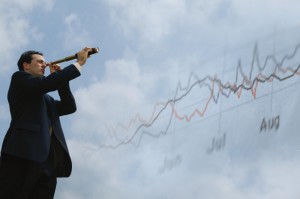 Retailers are always trying to get closer to customers. But it’s not just about improving service to those customers – it’s about understand more about what products they are demanding so as to make better forecasting decisions around, for example, how much of a particular item is needed in stock.
Retailers are always trying to get closer to customers. But it’s not just about improving service to those customers – it’s about understand more about what products they are demanding so as to make better forecasting decisions around, for example, how much of a particular item is needed in stock.
As this video reminded me, knowing your customers really well means you can easily know what products they will want, when and how, perhaps better than they do. Today, that knowledge is gleaned from a complex assessment of lots of online and offline data which contributes to every single buying decision by your customers.
The online element means it’s not just about attracting customers into the store. Visiting New York for the annual retail conference NRF a few weeks ago, I thought about how the value of retail space has changed. Retail giants that have been there for years, as well as the new retailers on the block, are continuing to transform the experience in-store to stay ahead of customer demand. We are enticed in-store with Wi-Fi, coffee, beer, or live DJs. But this only gets a retailer so far if they cannot capture key data about customers coming in to their stores.
The main problem, however, is not one of getting hold of data; it’s being able to forecast using that data.
We recently conducted the 3rd Annual Analytics in Retail Study, which reports that 71 per cent of retailers performed either basic or no reporting at all when it came to forecasting customer trends. Whilst a large proportion had the ability to gather data, and many were doing so, there is a clear gap in ability to analyse this data to inform business strategy. There are many possible reasons for this; a lack of in-house skills, and/or a lack of awareness of available technology that is more accessible.
At NRF it seemed clear to me that most retailers are continuing to find forecasting a problem, as they are also struggling against the volatility of promotions on stock and the lack of good data around non-traditional channels. As the view of the high street continues to change, shifting that ability to forecast for future buying trends will be the next frontier for retailers in 2015.
More and more retailers are looking at ways of capturing customer data in-store. Apple CEO Tim Cook recently declared 2015 to be the year of Apple Pay, which already makes up more than $2 out of $3 spent on purchases using contactless payment across the three major US card networks. We heard at NRF that this will be a focus for some of the UK's largest retailers. It provides an excellent opportunity to engage customers and enable them to pre-order items. Applying analytics to this data should help develop deeper customer relationships, and more personalised offers and prices. Crucially it also offers insight into customer demand so retailers can make better forecasting decisions.
You may also be interested in my colleague Alison Bolen’s take on the three big trends to come out of NRF this year. Read more about those here. In the meantime, let me know what you think. And thank you for following!

